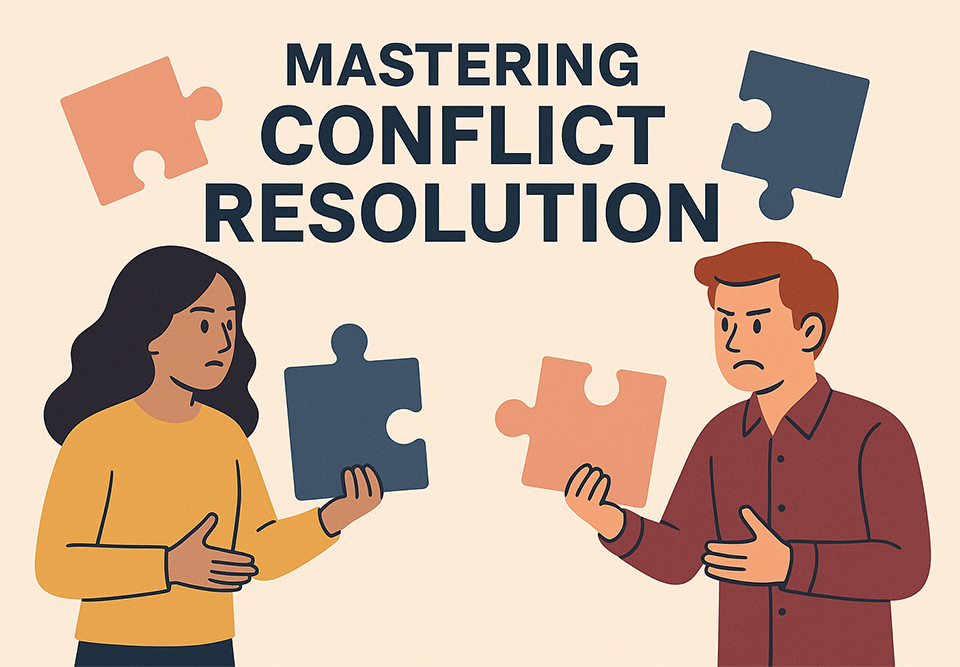
Enhancing Team Dynamics Through Executive Coaching
May 13, 2025
Master Execution: Setting Goals for Better Decision Making
May 16, 2025The Alignment Imperative
Picture this scenario: Your organization has invested months crafting an inspiring vision statement. Leadership has championed it at town halls. It’s prominently displayed on your website and office walls. Yet six months later, teams are still working in silos, pursuing objectives that seem disconnected from this grand vision. Individual departments celebrate their own victories without understanding how they contribute to the organization’s overarching goals. The result? Wasted resources, duplicated efforts, and a workforce that feels adrift rather than united by purpose.
This disconnect between organizational vision and team-level execution isn’t just frustrating—it’s one of the most significant barriers to sustainable business success. According to research cited by Forbes, companies with highly aligned teams achieve revenue growth 58% faster and are 72% more profitable than their misaligned counterparts.
As Julie Couret, a leading executive coach based in New Orleans, explains: “Vision without aligned execution is just a beautiful painting hanging in the conference room. The magic happens when every team member can draw a direct line between their daily work and the organization’s ultimate destination.”
This comprehensive guide explores proven strategies to bridge the gap between lofty organizational visions and practical team objectives. Whether you’re a C-suite executive struggling with company-wide alignment or a department leader trying to connect your team’s efforts to broader goals, you’ll find actionable approaches to create the powerful synergy that drives exceptional performance.
Understanding the Alignment Gap: Why Teams and Vision Diverge
Before implementing solutions, it’s crucial to understand why misalignment occurs even in organizations with well-articulated visions. Several factors typically contribute to this disconnect:
1. Abstract Vision Statements
Many organizational vision statements are inspirational but too abstract for practical application. When team members can’t translate grand aspirations into concrete actions, they default to familiar patterns and immediate priorities.
A case study from Salto de Efe demonstrates how one company addressed this by creating a vision cascade—breaking down their overarching vision into sector-specific interpretations that resonated with different functional areas.
2. Competing Priorities
In the day-to-day rush of operational demands, teams often prioritize urgent tasks over important strategic activities. This “tyranny of the urgent” gradually pushes vision-aligned work to the background.
3. Measurement Misalignment
As Julie Couret highlights in her work on accountability systems, “What gets measured gets done.” When performance metrics don’t reflect contributions to the organizational vision, teams naturally optimize for the metrics that affect their evaluations and compensation.
4. Siloed Planning Processes
When departments develop objectives in isolation, they miss opportunities to identify interdependencies and create synergistic goals that advance the organizational vision more effectively than any single team could achieve alone.
5. Surface-Level Buy-In
Sometimes leaders assume team members understand and embrace the organizational vision when they’ve actually secured only superficial agreement. As noted in Exit Momentum’s analysis, this is akin to “pulling the weeds but leaving the roots”—addressing symptoms of misalignment without resolving the underlying disconnect.
The Business Case for Alignment: Why It Matters
The costs of misalignment extend far beyond missed strategic objectives. Organizations with poor alignment between team goals and organizational vision typically experience:
- Resource Inefficiency: Teams invest energy and capital in initiatives that don’t advance strategic priorities
- Decision Paralysis: Without clear alignment, decisions require excessive consultation and often stall
- Talent Attrition: Employees who can’t connect their work to a meaningful purpose are 34% more likely to leave within two years
- Market Inconsistency: Customers experience disjointed interactions across departments, weakening brand perception
- Innovation Barriers: Misaligned teams rarely combine insights to generate breakthrough ideas
Conversely, organizations that successfully align team goals with their vision realize substantial benefits:
- Accelerated Execution: When everyone moves in the same direction, initiatives advance more quickly with fewer obstacles
- Enhanced Agility: Aligned teams make faster decisions because they share a clear understanding of priorities
- Higher Engagement: Employees who see their work’s relationship to organizational purpose report 27% higher satisfaction
- Strategic Resource Allocation: Capital and talent flow naturally to high-impact initiatives
- Sustainable Growth: Aligned organizations grow revenue 58% faster than their misaligned competitors
Seven Strategies for Aligning Team Goals with Organizational Vision
Let’s explore seven evidence-based approaches to create powerful alignment between your organization’s vision and your teams’ day-to-day objectives.
1. Cascade Vision Through Collaborative Translation
The Approach: Rather than simply communicating your vision downward, engage teams in translating it into meaningful objectives at their level.
Implementation Steps:
- Host structured workshops where teams interpret the organizational vision in the context of their function
- Ask each department to articulate: “If the organization achieves its vision, what specific outcomes would our team have contributed?”
- Challenge teams to identify their unique leverage points for advancing the vision
Real-World Example: A healthcare system featured in Julie Couret’s strategic planning approach engaged department leaders in a two-day retreat to translate their patient-centered vision into specific quality metrics, operational standards, and collaboration protocols for each clinical and administrative team.
2. Implement OKRs (Objectives and Key Results) with Vision Linkage
The Approach: Adapt the popular OKR framework to explicitly connect team objectives to organizational vision.
Implementation Steps:
- Establish 3-5 organization-level objectives that directly advance your vision
- Require each team’s objectives to explicitly support one or more organizational objectives
- For each team objective, define measurable key results that demonstrate progress
- Review alignment quarterly to ensure continued relevance
Julie Couret’s focus on execution excellence emphasizes that OKRs work best when they balance ambition with realism: “The most effective goals stretch teams without demoralizing them through impossible targets.”
3. Create Cross-Functional Vision Champions
The Approach: Establish a network of vision ambassadors who work across departmental boundaries to identify alignment opportunities and resolve conflicts.
Implementation Steps:
- Select respected team members from different functions to serve as vision champions
- Provide specialized training in strategic alignment and facilitation
- Empower champions to participate in planning conversations across departments
- Hold monthly vision alignment forums where champions share insights and address emerging gaps
This approach addresses what Brent Gleeson calls “alignment architecture” in his Forbes analysis of leadership alignment, creating structural supports for sustained alignment rather than relying solely on initial planning.
4. Redesign Your Performance Measurement System
The Approach: Ensure that what you measure and reward at the team and individual level reinforces alignment with organizational vision.
Implementation Steps:
- Audit existing performance metrics for each role and department
- For each metric, assess its relationship to vision advancement
- Eliminate or downweight measures that don’t support vision-aligned behaviors
- Develop new metrics that specifically capture contributions to vision achievement
- Adjust compensation and recognition systems to prioritize vision alignment
According to Salto de Efe’s research, organizations that align at least 60% of their performance metrics with strategic priorities achieve 2.3x better results than those with more traditional measurement systems.
5. Institute Quarterly Vision Alignment Reviews
The Approach: Establish a regular cadence for teams to recalibrate their objectives against the organizational vision.
Implementation Steps:
- Schedule quarterly sessions where teams present their goals and achievements in the context of the broader vision
- Provide a structured format for teams to identify:
- Areas where current objectives advance the vision
- Activities that may be distracting from vision achievement
- Emerging opportunities to create greater alignment
- Make real-time adjustments to priorities based on insights gained
Julie Couret’s executive coaching practice in New Orleans has helped organizations implement this approach with remarkable results: “Quarterly alignment reviews transform vision from an annual consideration to an ongoing navigational tool.”
6. Develop Vision-Based Decision Filters
The Approach: Create practical decision-making tools that help teams evaluate options through the lens of the organizational vision.
Implementation Steps:
- Extract 3-5 core principles from your vision statement
- For each principle, develop 2-3 questions that test alignment
- Create a simple scoring tool teams can use when evaluating initiatives
- Require vision alignment scores as part of all significant proposal presentations
Example Decision Filter Questions:
- “How does this initiative strengthen our market differentiation as described in our vision?”
- “Will this decision accelerate or impede our progress toward becoming the industry leader our vision describes?”
- “Does this approach embody the customer experience our vision promises?”
These filters prevent what Exit Momentum describes as “apparent progress that masks fundamental misalignment.”
7. Create Narrative Bridges Between Daily Work and Vision
The Approach: Use storytelling to help team members understand the connection between their specific roles and the organizational vision.
Implementation Steps:
- Collect examples of how individual contributions have advanced the vision
- Create visual journey maps showing how routine processes support vision achievement
- Incorporate vision connection moments into regular team meetings
- Train managers to help team members articulate their personal impact on the vision
Julie Couret notes that “Intellectual understanding of alignment isn’t enough; emotional connection to the vision comes through stories that make abstract goals concrete and personal.”
Implementation Roadmap: From Vision to Aligned Action
Transforming your approach to alignment doesn’t happen overnight. This phased implementation roadmap provides a structured path forward:
Phase 1: Assessment (Weeks 1-4)
- Evaluate current alignment between team objectives and organizational vision
- Identify specific disconnects and their root causes
- Gauge leadership and team understanding of the vision
- Map decision processes to highlight alignment gaps
Phase 2: Foundation Building (Weeks 5-8)
- Refine vision communication to enhance clarity and relevance
- Select and train cross-functional vision champions
- Develop initial vision-based decision filters
- Begin collecting alignment success stories
Phase 3: Systems Redesign (Weeks 9-16)
- Implement collaborative vision translation workshops
- Redesign performance measurement and reward systems
- Establish quarterly vision alignment review process
- Create visual alignment tools for teams
Phase 4: Integration and Reinforcement (Ongoing)
- Conduct regular alignment pulse checks
- Refine approaches based on implementation learnings
- Celebrate and communicate alignment successes
- Incorporate alignment principles into onboarding and leadership development
Throughout this process, Julie Couret’s business coaching approach emphasizes accountability at every level: “Alignment isn’t a one-time event but a continuous practice that requires conscious reinforcement until it becomes cultural DNA.”
Overcoming Common Alignment Challenges
Even with a structured approach, organizations typically encounter several obstacles when aligning team goals with their vision:
Challenge #1: Middle Management Resistance
Symptom: Middle managers continue prioritizing departmental metrics over vision alignment.
Solution: Involve these key influencers early in the alignment process, help them see how vision advancement supports their success, and adjust their performance metrics to reward alignment activities.
Challenge #2: Short-term Performance Pressure
Symptom: Teams revert to misaligned activities when facing quarterly performance targets.
Solution: Explicitly incorporate vision alignment into performance expectations and create “air cover” for teams making short-term sacrifices for long-term alignment.
Challenge #3: Vision Drift
Symptom: The organizational vision evolves without corresponding updates to team objectives.
Solution: Implement a formal notification process for vision refinements and require teams to reassess their goals within 30 days of any significant vision change.
Challenge #4: Alignment Fatigue
Symptom: Teams view alignment activities as administrative burdens rather than value-adding processes.
Solution: Streamline alignment practices, demonstrate their impact through concrete examples, and integrate them into existing workflows rather than creating separate systems.
The team at Exit Momentum emphasizes that addressing these challenges requires persistence: “Alignment is a marathon, not a sprint. The organizations that sustain their focus on alignment through inevitable difficulties ultimately create unassailable competitive advantages.”
Measuring Alignment Success: Key Indicators
How do you know if your alignment efforts are working? These metrics provide insight into your progress:
Quantitative Indicators
- Vision Contribution Score: Percentage of team objectives directly supporting organizational vision components
- Resource Alignment: Proportion of budget and staffing allocated to vision-advancing initiatives
- Decision Speed: Average time required for cross-functional decisions
- Employee Vision Clarity: Survey results measuring team members’ understanding of how their work connects to organizational vision
Qualitative Indicators
- Strategic Coherence: Consistency of messaging across departments about organizational priorities
- Leadership Language: Frequency with which leaders reference the vision in routine communications
- Innovation Alignment: Extent to which new initiatives explicitly connect to vision advancement
- Customer Experience Consistency: Alignment of customer interactions across touchpoints with the promised vision
Julie Couret’s approach to accountability systems suggests using both leading indicators (measures that predict future alignment) and lagging indicators (measures that confirm alignment has occurred) to gain a complete picture of your alignment progress.
Conclusion: The Transformative Power of Alignment
When team goals and organizational vision move in concert, the impact extends beyond efficiency gains. True alignment creates organizational resonance—a state where every action reinforces rather than dilutes your strategic intent.
As we’ve explored, this alignment doesn’t happen by accident. It requires intentional systems, consistent reinforcement, and cultural commitment. The organizations that excel at alignment don’t just perform better temporarily; they build sustainable advantages that competitors struggle to replicate.
In the words of Julie Couret, whose executive coaching practice has guided countless leadership teams through this journey: “Vision without aligned execution is just aspiration. But when you connect your organization’s highest purpose to each team’s daily efforts, you create an unstoppable force in the marketplace.”
Ready to transform how your teams connect their goals to your organizational vision? Contact Julie Couret for a consultation on creating powerful alignment throughout your organization. Her strategic approach to alignment has helped companies across industries move from fragmented efforts to coordinated impact—turning inspiring visions into market-leading results.
Frequently Asked Questions on Bridging Vision and Team Alignment
What exactly is the “alignment gap” and why does it matter?
The alignment gap is when your organization’s vision doesn’t translate into day-to-day team goals, causing wasted time, confusion, and low engagement. Closing that gap ensures every department pulls in the same direction, speeding execution and boosting profitability.
How can I make an abstract vision statement feel tangible for my teams?
Run a vision-translation workshop: bring each department together to interpret the vision in the context of their own work. Ask, “If we nail this vision, what measurable outcomes will our team own?” Then map those outcomes to concrete KPIs or OKRs.
What role do OKRs play in aligning team goals to company vision?
Objectives & Key Results (OKRs) tie every team objective back to your top-level vision. Define 3–5 organization-wide objectives, require each team’s OKRs to support at least one, and review progress quarterly to keep everyone on track.
Who should own alignment efforts—and how do I avoid silos?
Build a cross-functional network of vision champions—one representative per function—trained to spot gaps and convene monthly alignment forums. This ensures departments stay in sync and no one works in isolation.
Which performance metrics best reinforce strategic alignment?
Audit existing KPIs and de-emphasize any not tied to your vision. Introduce new measures such as “percentage of projects mapped to vision pillars” or an internal NPS that gauges team members’ clarity on how their work supports the company’s purpose.
How often should we recalibrate our goals against the vision?
Quarterly alignment reviews are key. In each session, teams present OKR progress, identify activities that have veered off course, and adjust objectives in real time—turning vision from a once-a-year poster into an ongoing navigational tool.
What are “vision-based decision filters” and how do I build one?
Develop a short list of 3–5 questions drawn from your vision statement (e.g., “Does this initiative advance our customer-centric promise?”). Use a simple scoring tool so every proposal must pass the filter before moving forward.
How can storytelling help teams connect daily tasks to strategic purpose?
Create narrative bridges by collecting real examples of individual wins that propelled the vision. Share these stories in meetings or newsletters, and use visual journey maps to show how routine processes support big-picture goals.
What common pitfalls derail alignment initiatives—and how do we avoid them?
- Middle-manager resistance: involve them early and align their own metrics to vision priorities.
- Short-term pressures: provide “air cover” so teams can invest in long-term alignment, even if quarterly numbers dip.
- Alignment fatigue: streamline processes into existing workflows rather than adding standalone meetings.
How do I measure if our alignment strategy is working?
Track both quantitative and qualitative indicators:
- Vision Contribution Score (percent of team goals tied directly to vision pillars)
- Decision Speed (average time from proposal to approval)
- Employee Vision Clarity (survey results on whether people understand how their work supports the vision)
- Innovation Alignment (count of new ideas explicitly linked to strategic objectives)
Combining these metrics gives you a clear, data-driven picture of alignment progress.
About Julie Couret
Julie Couret is an executive coach and leadership consultant specialized in helping organizations create alignment between strategic vision and operational execution. Through her firm’s business coaching and strategic planning services, she has helped leaders across industries develop the systems and capabilities needed to turn promising visions into market-leading performance.





